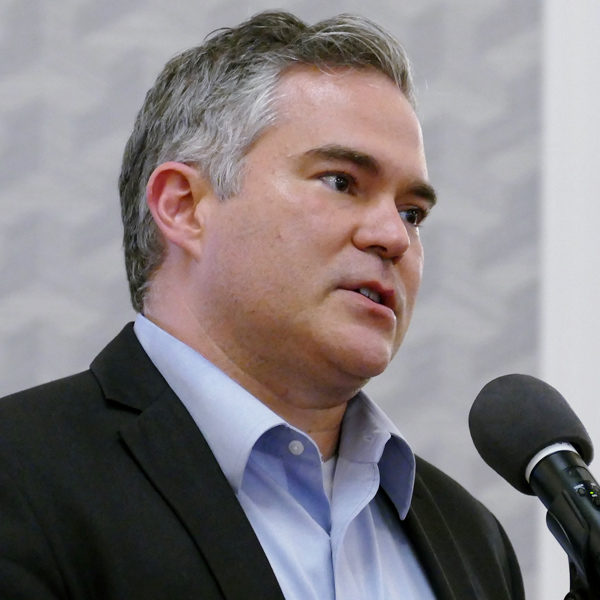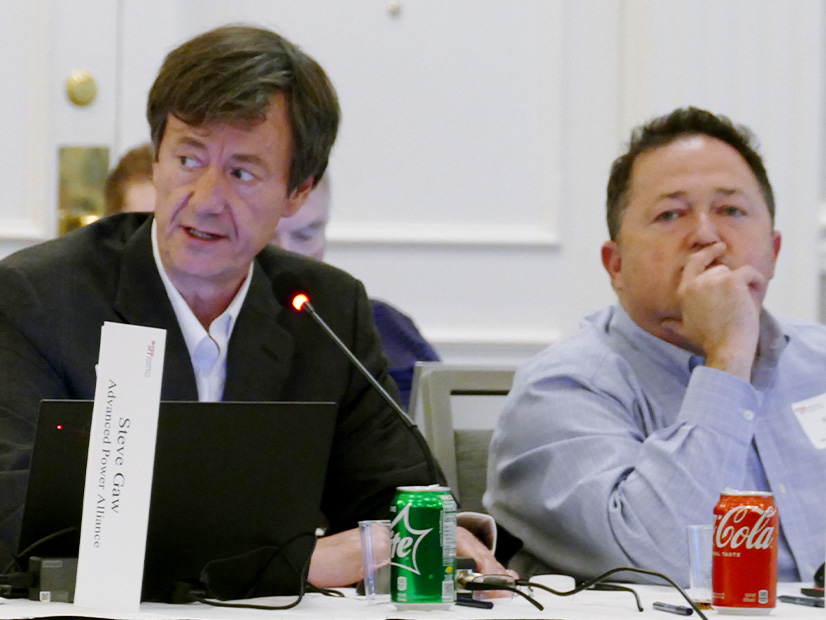TAC Passes Contentious Outage Measure over Staff’s Objections
ERCOT stakeholders on Monday declined to consider staff’s appeal of a tabled revision request that would create a process allowing the grid operator to review, coordinate and approve or deny all planned outages.
The Technical Advisory Committee instead approved its version of the nodal protocol revision request (NPRR1108), as amended by several joint commentators. The measure now goes before the Board of Directors for its consideration April 27-28.
The measure was passed unanimously, 26-0 with a pair of abstentions, during an emergency webinar Monday after it was tabled following more than an hour of discussion last Wednesday during TAC’s regularly scheduled meeting.
The measure was also tabled at the Protocol Revision Subcommittee (PRS) last November over concerns that staff’s proposal was inflexible and could lead to an inability to get planned outages completed. That would lead to decreased reliability in the months when there is higher demand on ERCOT’s generation fleet, they said.
Staff drafted NPRR1108 to meet the requirements of legislation passed last year in the wake of the February winter storm that nearly brought the ERCOT grid to its knees. Senate Bill 3 included a provision that the grid operator “shall review, coordinate and approve or deny requests by providers of electric generation service … for a planned power outage during any season and for any period of time.”
Under ERCOT’s original proposal, staff would review and coordinate all planned outages, including those submitted more than 45 days before the outage’s planned start. The revisions would:
- define a process for calculating a maximum megawattage of planned outages that would be allowed for each day of the next rolling 60 months, based on a capacity assessment;
- require that a planned outage, or change to an approved outage, submitted more than 45 days in advance of the planned start time would no longer be “accepted” but would be approved on a first-come, first-served basis if the resulting aggregate planned outages are below the daily maximum megawattage for each day of the proposed outage’s duration; and
- require that a planned outage or change to an approved outage submitted less than 45 days in advance of the planned start time would be evaluated against the maximum daily planned resource outage capacity (MDRPOC) and for impacts on transmission reliability.
Dan Woodfin, ERCOT’s vice president of system operations, complained that the grid operator last November asked for stakeholder feedback within months. The lack of input has pushed back the methodology’s implementation to fall 2023, he said.
Reliant Energy Retail Services’ Bill Barnes, acting as the PRS advocate, said the NPRR included many inputs subject to discretion.
“Stakeholders needed to fully assess the methodology needed to see the results of the calculations,” he said, explaining why the measure has remained tabled.
The two sides have traded competing versions of their comments, with ERCOT filing the last Sunday night. In the comments, staff proposed to allow nuclear generators to schedule planned outages, even if the resulting outage capacity would exceed the MDRPOC. They also agreed with the residential consumer segment that they should prove a report to TAC on the MDRPOC’s effects.
Stakeholders stuck with the joint commentators’ filing, which requires the MDRPOC for outages more than seven days ahead of the operating day be posted twice each to provide greater transparency and reduce the risk of potentially large changes when “stale monthly long-term MDRPOC projections” are replaced by the near-term projections less than seven days ahead of the operating day.
They also call for outage guardrails that are sensitive to concerns about weather variations during outage seasons to provide predictable minimum outage windows for resource owners and still allow ERCOT to deny outages on days over the MDRPOC.
ERCOT legal counsel Nathan Bigbee fired back Monday over the notion that the outage-approval process should be subject to TAC approval.
“There seems to be kind of a disconnect between industry in general and the ISO over what exactly the methodology should be,” he said. “It seems likely the methodology we prefer is a methodology TAC would not endorse. Having that control would lead us down a path less in the interest of reliability. That’s why we don’t think it’s appropriate. Ultimately, the board is going to be the arbiter of those decisions.”
ERCOT can file additional comments on NPRR1108 with the board or appeal the decision to the Public Utility Commission for an appeal.
Unsecured Credit Limit Lowered
TAC on Wednesday approved a measure that reduces unsecured credit limits from $50 million to $30 million, but not before a back-and-forth between one member and a staffer over uplift that resembled Monty Python’s classic “Argument Clinic” sketch.
“I fundamentally disagree with your concept of how the market works,” Kenan Ögelman, ERCOT’s vice president of commercial operations, told Morgan Stanley’s Clayton Greer.
PRS amended NPRR1112 in March to reinstate unsecured credit limits. ERCOT responded with comments that said eliminating unsecured credit “will reduce the inconsistent cross-subsidization of credit exposure and provide a more level playing field for market participants.”
Members disagreed. Garland Power and Light’s Dan Bailey said staff’s response was “the most ridiculous problem ERCOT has tried to solve without solving the problem.”
“From a market and consumer standpoint, taking a nuclear approach to credit is a little bit questionable,” he said. “Why ERCOT would think this is the right direction to go has left me scratching my head. I’m baffled to see that ERCOT is going down this path.”
TAC rejected an motion to amend the measure with ERCOT’s comments, 3-16 with 11 abstentions. It attracted approval only from the two residential consumer representatives and retailer Reliant Energy.
A motion to approve PRS’ recommended version passed 23-2 with five abstentions. The residential consumer representatives cast the two opposing votes.
RUC Process Changes Endorsed
The committee approved a pair of rule changes related to reliability unit commitments (RUCs), which have been increasingly used by ERCOT since last summer as part of its conservative operations approach.
NPRR1124 is intended to ensure generation resources recover their actual fuel costs when they are RUCed by setting the start-up price and minimum-energy price to the start-up cap and the minimum-energy cap.
The measure was opposed by all six consumer segment representatives, who objected to consumers bearing the increased costs.
TAC also approved a motion related to NPRR1092, which lowers the RUC offer floor to $250/MWh from $1,500/MWh, as amended by clarifying ERCOT comments April 6. Members approved the measure in March, pending an impact analysis from staff. (See “RUC Offer Floor Lowered to $250,” ERCOT Technical Advisory Committee Briefs: March 30, 2022.)
Staff said it will cost between $50,000 and $75,000 and take four to six months to change the RUC offer floor, as proposed by the Independent Market Monitor. The measure still needs regulatory approval and prioritization.
The motion passed 25-1, with Luminant opposing and two representatives each from the cooperative and independent power marketer segments abstaining.
Ögelman Addresses Concerns with Board Interactions
Ögelman responded to stakeholder concerns about their interactions with the board’s new Reliability and Markets Committee, saying that the directors are still working through the structure they want.
“The board’s trying to figure out how they want to do business and what they might want to do differently,” he said. “Right now, we have to beg everyone to be patient with us and work with the board to give them the processes they want. They have a vision … they’re just not ready to share it yet.”
Ögelman was responding to a clarification request from the Wholesale Market Subcommittee, which reports directly to TAC. ERCOT’s bylaws require TAC to report to the full board, rather than a board committee; any bylaw changes would require a vote of the full membership, Ögelman said.
Two More SCT Directives Approved
TAC endorsed staff’s response to two additional directives issued by the PUC related to the Southern Cross Transmission (SCT) project, a merchant long-haul HVDC transmission line that would connect ERCOT with systems in the SERC Reliability region.
In responding to the 14 PUC directives, ERCOT staff found they would not need to study and determine transmission upgrades to address congestion caused by SCT (No. 6). Staff determined in the second directive (No. 8) that as of Jan. 1, 2021, DC ties should be required to have at least a 0.95 power factor leading/lagging reactive power capability, which several revision requests have already addressed.
The SCT would be capable of carrying 2 GW of power between Texas and SERC over a 400-mile, double-circuit 345-kV line. The project has FERC approval and a waiver from the commission’s jurisdiction. It also has a certificate of convenience and necessity granted by the PUC in 2017 to Garland Power & Light, which owns the project’s western endpoint.
The PUC last year directed its staff to file a memo asking the proceeding’s parties for suggestions on accelerating the project, which has been under regulatory review for more than seven years (46304). (See Texas Regulators Boost Southern Cross Project.)
ESRs’ Minimum Duration Set at 2 Hours
TAC’s unanimously approved combination ballot included a recommendation from the Reliability and Operations Subcommittee to set a minimum duration threshold of two hours for energy storage resources (ESRs). Lower-duration ESRs would be prorated to their continuous real power capability for two hours.
The combo ballot included two additional NPRRs, a Nodal Operating Guide revision (NOGRR), two revisions to the Planning Guide (PGRR) and a change to the Settlement Metering Operating Guide (SMOGRRs):
-
- NPRR1117: aligns the protocols with the Settlement Meter Operating Guide revisions to allow for losses in short runs of connecting lines to be disregarded when the ERCOT-polled settlement meter (EPS) is not physically placed at the point of interconnection (POI).
- NPRR1125: clarifies that ERCOT may use available financial security held for other market activities should there be payment defaults in either of the two securitization proceedings. The change also specifies the prioritization for applying the securities when there are concurrent defaults for either invoices or escrow deposit requests.
- NOGRR239: delineates the responsibilities for providing security for data transmitted between ERCOT, qualified scheduling entities and transmission operators.
- PGRR096: establishes requirements for the consistent representation of distribution generation resources, distribution energy storage resources, settlement-only distribution generators and unregistered distributed generation in steady-state base cases.
- PGRR098: enables corrective action plans to be developed under certain outage scenarios to the existing reliability performance criteria.
- SMOGRR025: allows for losses in short runs of connecting lines to be disregarded in instances where the EPS meter is not physically placed at the POI and requires calculation to verify that the watts copper losses are below 0.001%.



